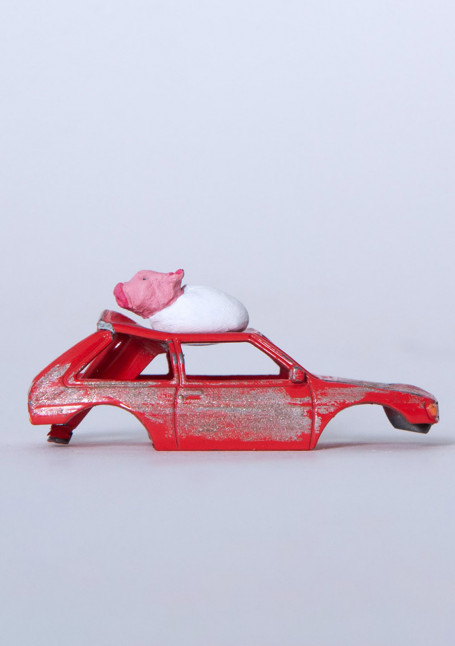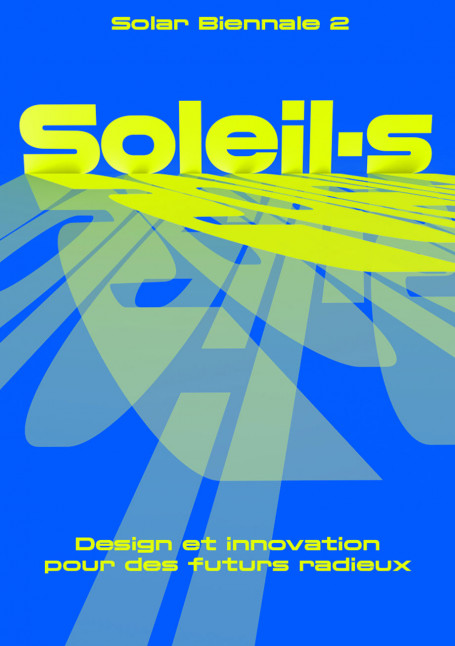- The school
- Studies and Research
- BACHELOR
- MASTER
- TRANSDISCIPLINARITY
- POOLS
- Research
- Workspace - CERCCO
- CONTINUING EDUCATION
- For students
- Studying at the HEAD
- InfoLab
- Living in Geneva
- Tuition fees and sholarship
- Library
- Regulations and instructions
- Projects
- Events
- Press
- Partnerships and prizes
Soleil·s : MA Space and Communication exhibition at the Biennale du Soleil
From 21 March to 21 September 2025
Opening: 20 March 2025
MUDAC - Musée cantonal de design et d’arts appliqués contemporains
Place de la Gare 17
1003 Lausanne
For Soleil-s, the new edition of the Biennale du Soleil being held at the Mudac from 21.03.2025 to 21.09.2025, students in their first year of the Master's programme Space & Communication: Design Installation have created 7 eschatological dioramas.
Each meticulously crafted diorama depicts the disappearance of the sun: the spectacle of its demise, the privatisation of its light, the original soup, zero gravity where mutating species roam, the last inhabitants, and so on. The formalisation of this project revisits the famous Nutshell Studies of Unexplained Death, the models of crime scenes painstakingly made in the mid-twentieth century by Frances Glessner Lee, widely used in the teaching and practice of forensic science.
These 7 dioramas invite visitors to transform themselves into investigators and decipher the scenes, combining facts, speculation, black humour and predictions.
Louna Passal & Élie Girard, Autocookable Pig
Since the sun was privatised by multinationals, life on earth has been split in two: upstairs, the wealthy have access to light by paying exorbitant subscriptions, while downstairs, the poorest live in darkness, illuminated by the omnipresent adverts broadcast on giant screens. The last inhabitants survive in apartment cars crammed onto scaffolding, feeding on Autocookable Pig, genetically modified pigs.
Rahel Rippel & Jan Kaminski, Primordial Soup
The primordial soup theory describes the beginning of life on Earth billions of years ago. Could the end of organic life be a return to this state? When the Sun dies, will there be nothing left but formless matter?
Charlotte Favre, The Ceremony
Inspired by Paul Virilio's apocalyptic sublime, The Ceremony offers a different interpretation of the tragic and frightening Western perception of the end of the world. Here, as human beings die, they can contemplate a sublime spectacle.
Lou-Vanille Tissot-Daguette & Luna Valls-Haenni, LEXOR XQR
In a sunless future, humanity lives in underground spaces managed by A.I. Inspired by Serge Brussolo's short story, Vue en coupe d'une ville malade (1980), the diorama shows the consequences of the delirious calculations of LEXOR XQR, a domestic machine designed to assist humans using probabilities and scientific predictions. Initially designed to optimise living spaces, it recycles materials in extreme configurations that border on the absurd.
Carolina Eckell Bernasconi & Elena Llosas, Can You Hear Through the Fog ?
The world is plunged into an icy cold. A nuclear winter has covered everything. All that remains are the ruins of collapsed buildings, covered in a fine dust. Silence echoes the eerie emptiness. Only three humans have survived. They have just discovered the latest radio. The sounds it picks up instil hope that another world is possible and ease the oppressive silence. The radio has only two batteries. No one knows how long they will last.
Manon Boyer & Léa Gruaz, Lichen volatilis
Earth's gravity has disappeared. The Earth is drifting in space. In total darkness, temperatures have dropped drastically, approaching absolute zero. Geological layers have separated, liquids have evaporated, creating a cloud of humidity. Everything died. But one last living organism survived. It has undergone numerous mutations that have enabled it to resist the hostile environment. During its endless intergalactic journey, every time the Earth comes across stars that emit light, like ephemeral suns, Lichen volatilis takes advantage of the opportunity to absorb and store the energy it needs to exist and reproduce.
Romane Buffat & Eléa Malmouche, Sun II
In 2075, humanity is powered entirely by solar energy, thanks to a mirror satellite that reflects sunlight back to Earth 24/7. Night does not exist, nor do cycles of rest; human and industrial productivity has reached its peak. Fifty years after the second Solar Biennale, mudac is hosting a new edition to celebrate the tremendous success of designers in the 2020s. Through this mise en abyme, Sun II takes a critical look at technophilia and the biennial.

Soleil.s- Louna Passal & Elie Girard, Autocookable Pig
© HEAD – Genève
© HEAD – Genève

Soleil.s - Exposition du Master Espace & Communication à la Biennale du Soleil 2025
© MUDAC
© MUDAC

